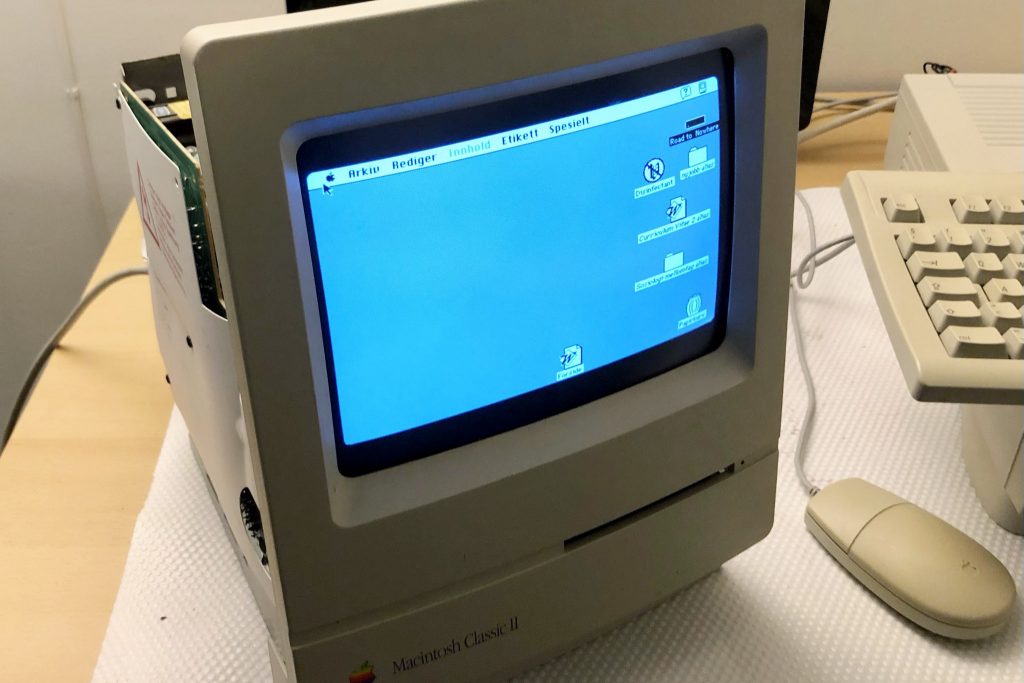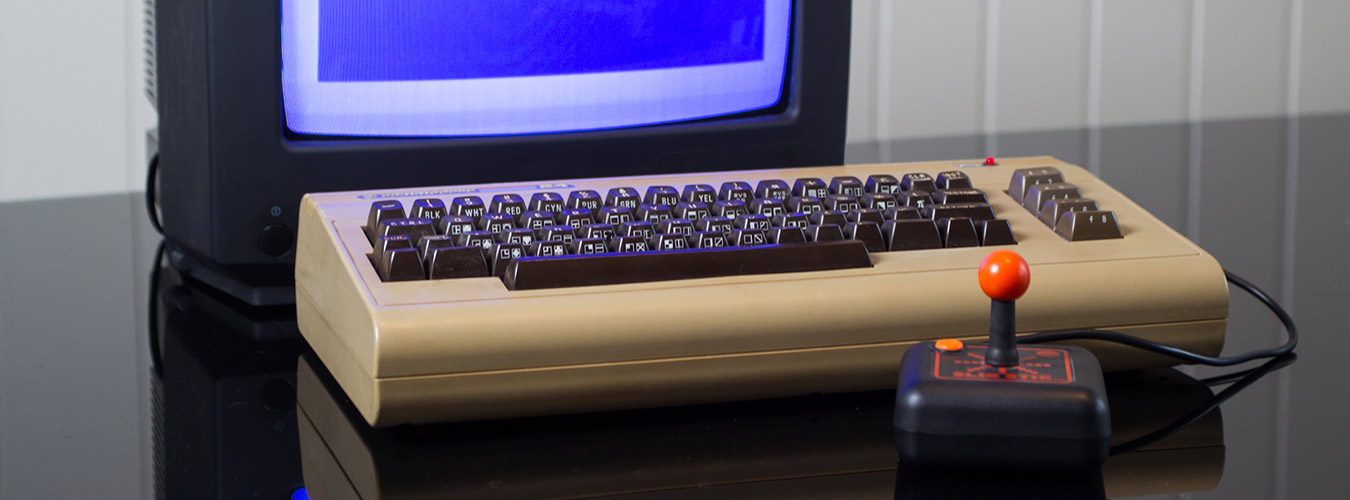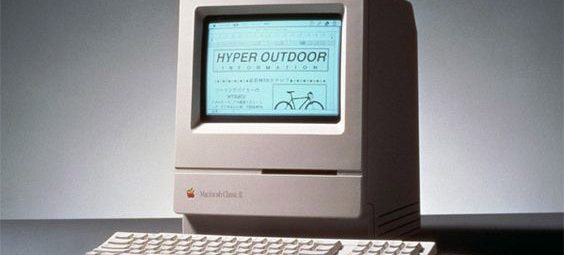Facts
- Type: All-in-one
- Manufacturer: Apple Computer
- Released: October, 1991
- Discontinued: October, 1993
- OS: System 6.0.8L- Mac OS 7.6.1
- Introductory price: $1,899 ($2,399 with 4 MB RAM, 80 MB HDD)
- CPU: 68030 @ 16 MHz (16 bit data bus)
- Memory: 2 MB RAM (expandable to 10 MB, 30-pin SIMM)
- Display: 9 inches, 512 x 342 pixel, 1 bit
- Audio: 8-bit mono 22 kHz
- Display: 9″ black and white CRT
- Internal storage: 40 or 80 MB SCSI HD 3.5″
- Removable storage: FDD 1.44 MB
- ROM 512 KB
- Dimensions: 13.2″ (34 cm) x 9.7″ (25 cm) x 11.2″ (28 cm)
- Weight: 16 pounds (7.3 kg)
- Predecessor: Macintosh SE/30, Macintosh Classic
- Successor: Macintosh Color Classic
Released 1991: The Macintosh Classic II (also sold as the Performa 200, “Performa 1” in Europe, “Classic Mono” in Australia & New Zealand and as “Deluxe II” or “Deluxe 2” in Japan and other parts of Asia) is a personal computer designed, manufactured and sold by Apple Computer, Inc. from October 1991 to September 1993. Like the Macintosh SE/30 it replaces, the Classic II was powered by a 16 MHz Motorola 68030 CPU and 40 or 80 MB hard disk, but in contrast to its predecessor, it was limited by a 16-bit data bus (the SE/30 had a 32-bit data bus) and a 10 MB memory ceiling. The slower data bus resulted in the Classic II being 30% slower than the SE/30.
While the Classic II shares a case with the earlier Classic, architecturally it is more similar to the Macintosh LC. The use of custom ICs, identical to those used in the LC, enabled the Classic II to have a lower component count than older Macs. Unlike the LC and the SE/30 before it, the Classic II does not have an internal Processor Direct Slot, making it the first slot-less desktop Macintosh since the Macintosh Plus.
The Classic II was one of the three machines Apple repackaged as a Macintosh Performa when the brand was introduced in September 1992. Called the “Performa 200”, it was sold with the same specifications as the original Classic II, with the addition of a speaker grille on the left side for enhanced sound. A number of changes to the packaged software were included, such as the “At Ease” desktop alternative which aimed to provide a simpler user interface than the standard Macintosh Finder. The exact software included tended to vary from one retailer to the next. It was initially offered at a retail price of about $1,250 USD. The Classic II is the last black-and-white compact Macintosh, and the last desktop Macintosh to include an external floppy disk drive port. Apple discontinued support for the Classic II on January 1, 2001.
My Macintosh Classic II
I got my Classic II from a local pickup at a very decent price. I powered the machine on, and it showed only vertical bars on the screen and no bootup sound. I split the case open by removing the four hex-screws. First I removed the battery, luckily it had not leaked. In this model its only used for keeping track of date, time and is not needed.
Replace capacitors (recap)
Aging SMD capacitors are usually in need to be replaced, as they leak and make all sorts of problems much more often than hole through mounted capacitors. I replaced the capacitors and cleaned the areas with alcohol IP. I still got nothing but vertical bars on the screen.
Washing the mainboard
I decided to clean the mainboard in the dish wash. First I removed socketed IC’s and RAM SIMM module. I let it soak in soap water for an hour or so, then I sprayed it throughout with contact cleaner and then let it dry out. Then I cleaned all the chip pins using alcohol IP and Q-tips. Success! After this the machine booted right up without issues. I also adjusted the screen a bit using the potentiometers at the rear, and also re-soldered the solder joins on the heavy components at the vertically mounted analogue controller board for the screen.



2 thoughts on “Macintosh Classic II”